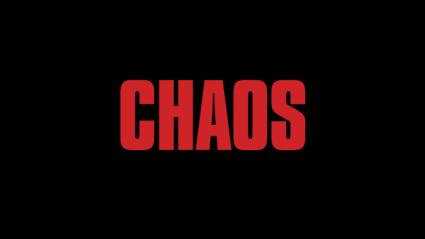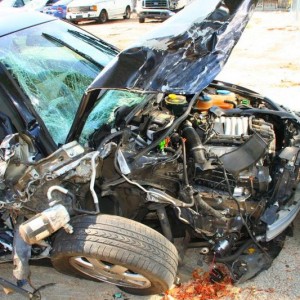 If yields on U.S. Treasury bonds keep rising, things are going to get very messy. As I write this, the yield on 10 year U.S. Treasures has risen to 2.51 percent. If that keeps going up, it is going to be like a mile wide lawnmower blade devastating everything in its path. Ben Bernanke’s super low interest rate policies have systematically pushed investors into stocks and real estate over the past several years because there were few other places where they could get decent returns. As this trade unwinds (and it will likely not be in an orderly fashion), we are going to see unprecedented carnage. Stocks, ETFs, home prices and municipal bonds will all be devastated. And of course that will only be the beginning. What we are ultimately looking at is a sell off very similar to 2008, only this time we will have to deal with rising interest rates at the same time. The conditions for a “perfect storm” are rapidly developing, and if something is not done we could eventually have a credit crunch unlike anything that we have ever seen before in modern times.
If yields on U.S. Treasury bonds keep rising, things are going to get very messy. As I write this, the yield on 10 year U.S. Treasures has risen to 2.51 percent. If that keeps going up, it is going to be like a mile wide lawnmower blade devastating everything in its path. Ben Bernanke’s super low interest rate policies have systematically pushed investors into stocks and real estate over the past several years because there were few other places where they could get decent returns. As this trade unwinds (and it will likely not be in an orderly fashion), we are going to see unprecedented carnage. Stocks, ETFs, home prices and municipal bonds will all be devastated. And of course that will only be the beginning. What we are ultimately looking at is a sell off very similar to 2008, only this time we will have to deal with rising interest rates at the same time. The conditions for a “perfect storm” are rapidly developing, and if something is not done we could eventually have a credit crunch unlike anything that we have ever seen before in modern times.
At the moment, perhaps the most important number in the financial world is the yield on 10 year U.S. Treasuries. A lot of investors are really concerned about how rapidly it has been rising. For example, Patrick Adams, a portfolio manager at PVG Asset Management, was quoted in USA Today as saying the following on Friday…
“I am watching the 10-year U.S. bond,” says Adams. “It has to stabilize. If the yield goes significantly higher the market is going to freak out.”
If interest rates keep rising, it is going to have a dramatic effect throughout the economy. In an article that he just posted, Charles Hugh Smith explained some of the things that we might soon see…
The wheels fall off the entire financialized debtocracy wagon once yields rise. There’s nothing mysterious about this:
1. As interest rates/yields rise, all the existing bonds paying next to nothing plummet in market value
2. As mortgage rates rise, there’s nobody left who can afford Housing Bubble 2.0 prices, so home prices fall off a cliff
3. Once you can get 5+% yield on cash again, few people are willing to risk capital in the equities markets in the hopes that they can earn more than 5% yield before the next crash wipes out 40% of their equity
4. As asset classes decline, lenders are wary of loaning money against these assets; if the collateral for the loan (real estate, bonds, stocks, etc.) are in a waterfall decline, no sane lender will risk capital on a bet that the collateral will be sufficient to cover losses should the borrower default.
In addition, rapidly rising interest rates would throw the municipal bond market into absolute chaos. In fact, according to Reuters, nearly 2 billion dollars worth of municipal bond sales were postponed on Thursday because of rising rates…
The possibility of rising interest rates rocked the U.S. municipal bond market on Thursday, with prices plunging in secondary trade, investors selling off the debt, money pouring out of mutual funds and issuers postponing nearly $2 billion in new sales.
“The market got crushed,” said Daniel Berger, an analyst at Municipal Market Data, a unit of Thomson Reuters, about the widespread sell-off.
We are rapidly moving into unprecedented territory. Nobody is quite sure what comes next. One financial professional says that municipal bond investors “are in for the shock of their lives”…
“Muni bond investors are in for the shock of their lives,” said financial advisor Ric Edelman. “For the past 30 years there hasn’t been interest rate risk.”
That risk can be extreme. A one-point rise in the interest rate could cut 10 percent of the value of a municipal bond with a longer duration, he said.
Many retail buyers, though, are not ready for the change and “when it starts, it will be too late for them to react,” he said, adding that he was encouraging investors to look at their portfolio allocation and make changes to protect themselves from interest rate risks now.
Rising interest rates are playing havoc with other financial instruments as well. For example, it appears that the ETF market may already be broken. Just check out the chaos that we witnessed on Thursday…
The selling also caused disruptions in the plumbing behind several ETFs. Citigroup stopped accepting orders to redeem underlying assets from ETF issuers, after one trading desk reached its allocated risk limits. One Citi trader emailed other market participants to say: “We are unable to take any more redemptions today . . . a very rare occurrence due to capital requirements we are maxed out on the amount of collateral we have out.”
State Street said it would stop accepting cash redemption orders for municipal bond products from dealers. Tim Coyne, global head of ETF capital markets at State Street, said his company had contacted participants “to say we were not going to do any cash redemptions today”. But he added that redemptions “in kind” were still taking place.
These are the kinds of things that you would expect to see at the beginning of a financial panic.
And when there is fear in the marketplace, credit can dry up really quickly.
So are we headed for a major liquidity crisis? Well, that is what Chris Martenson believes is happening…
The early stage of any liquidity crisis is a mad dash for cash, especially by all of the leveraged speculators. Anything that can be sold is sold. As I scan the various markets, all I can find is selling. Stocks, commodities, and equities are all being shed at a rapid pace, and that’s the first clue that we are not experiencing sector rotation or other artful portfolio-dodging designed to move out of one asset class into another (say, from equities into bonds).
The bursting of the bond bubble has the potential to plunge our financial system into a crisis that would be even worse than we experienced back in 2008. Unfortunately, as Ambrose Evans-Pritchard recently noted, the bond market is dominated by just a few major players…
The Fed, the ECB, the Bank of England, the Bank of Japan, et al, own $10 trillion in bonds. China, the petro-powers, et al, own another $10 trillion. Between them they have locked up $20 trillion, equal to roughly 25pc of global GDP. They are the market. That is why Fed taper talk has become so neuralgic, and why we all watch Chinese regulators for every clue on policy.
This is one of the reasons why I write about China so much. China has a tremendous amount of leverage over the global financial system. If China starts selling bonds at about the same time that the Fed stops buying bonds we could see a shift of unprecedented proportions.
Sadly, most Americans have absolutely no idea how vulnerable the financial system is.
Most Americans have absolutely no idea that our system of finance is a house of cards built on a foundation of risk, debt and leverage.
Most Americans have complete and total faith that our leaders know what they are doing and are fully capable of keeping our financial system from collapsing.
In the end, most Americans are going to be bitterly, bitterly disappointed.


